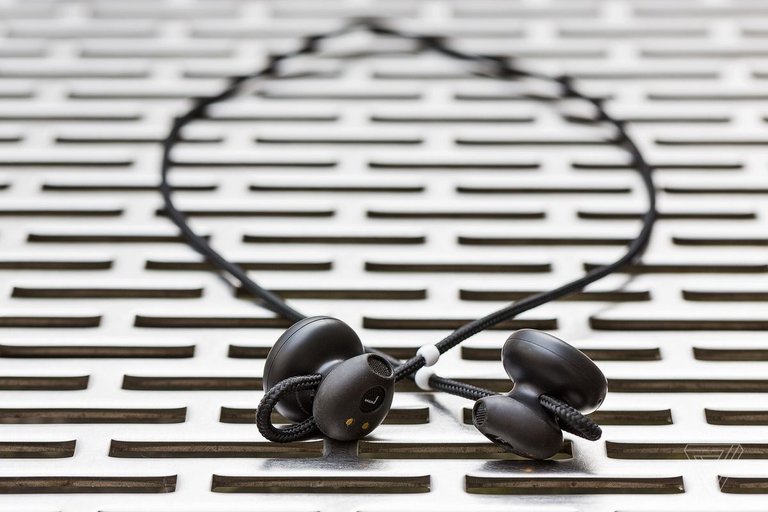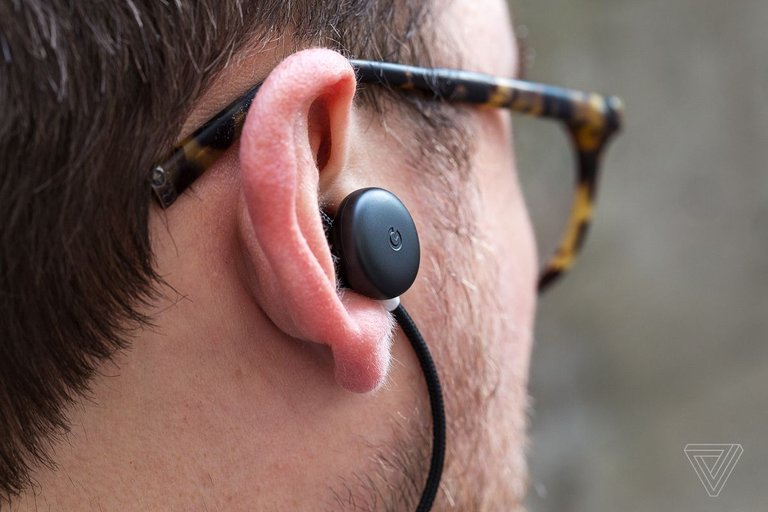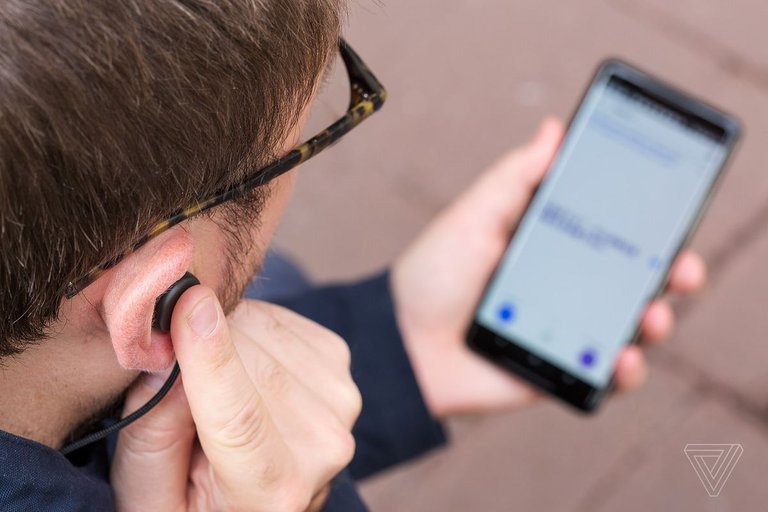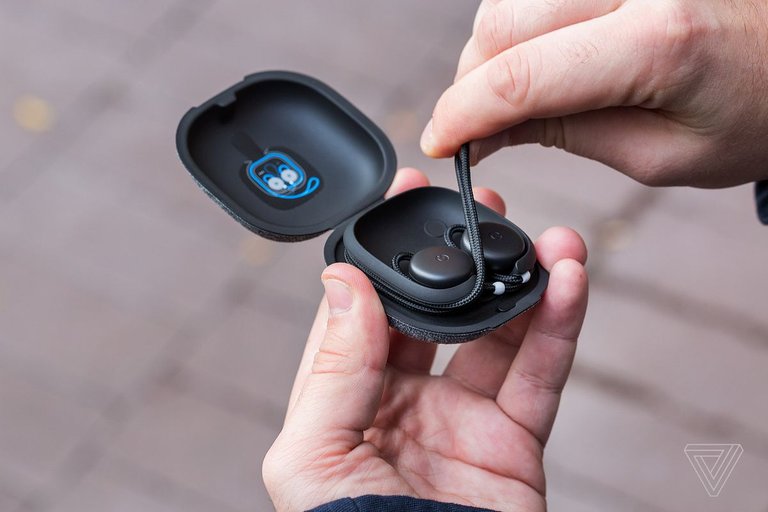all it a hardware company or not, Google has been making a lot of new physical products lately. Some have been fantastic. Others exhibit the kinds of glaring growing pains typically associated with first-generation hardware.
The Pixel Buds are the perfect example of this dichotomy. On one hand, they do some of the wireless earbud basics well, and they mix in some smart features that tease a seemingly inevitable future where we all have computers in our ears.
Largely, though, Google comes up short with these $159 wireless earbuds. The Pixel Buds are full of little flaws that make life with them a frustration. Yes, this is first generation hardware. But it’s also coming from Google, which hasn't been shy about raising expectations for its new hardware division. For the Pixel Buds, at least, it's better to lower them.

google’s hardware unit announced Pixel Buds earlier this year, a pair of wireless earbuds (aka corded wireless earbuds aka neckbuds) designed to work best with Google's Pixel phones. There are many reasons why Google would want to take a swing at this part of the market, but the two biggest are that it’s growing, and that (with the death of the headphone jack) wireless earbuds give companies a chance to offer competitive features to customers who stay in their ecosystem.
But before we get to all that, let's start with the basics. Google’s Pixel Buds are two Mentos-sized earbuds chained together by a fabric-covered cord. They pair to your smartphone over Bluetooth and work best with the Google Pixel 2. But they are also compatible with most any modern smartphone for simple things like streaming music.
The outside of the right earbud is also a touchpad; tap to play or pause, swipe forward or back to turn the volume up or down. A double tap will, on Android phones, tell you the time and read out your most recent notifications.
There’s curiously (and frustratingly) no control for skipping or going back a track. This can be triggered via the Google Assistant, which is activated with a tap-hold gesture, but not every app supports playback controls via voice. To my dismay, I discovered this while, when listening to Childish Gambino, I got to the part of his most recent album where I always, without fail, skip “California.” Except this time, I couldn’t do that without pulling out my phone, because I was listening on the Apple Music Android app. (Ecosystem lock-in is real, sue me.) Thus, the Pixel Buds are the reason I heard that song for the first time in almost a year. For this, I will never forgive Google.
On smaller wireless earbuds, I typically prefer touch controls over physical buttons, because with the latter I wind up usually jamming the tip of the thing further into my ear canal. That’s an unpleasant and dangerous action that touch controls help users like me avoid.
But the touchpad on the Pixel Buds is frighteningly sensitive. I experienced lots of accidental taps and swipes during attempts to control my music or podcasts. What’s worse, though, is the Pixel Buds’ touchpad almost inevitably registers an errant touch when you’re either trying to stow the earbuds in their case, or leaving them hanging around your neck.
The earbuds don’t recognize that they’re out of your ears so the touchpad is active until they’re in the case. (This also means there’s no way to turn the earbuds off until they’re in the case.) Unless you’re extremely careful, you’re destined to lose your precise place in the playlist or podcast you might have been listening to. It’s an embarrassing oversight.

When your music is actually streaming, the Pixel Buds sound pretty good, at least compared to other earbuds with this "open" style — though they’re a far cry from the quality of the Bose SoundSport Free. The Pixel Buds reproduce audio clearly, and there’s a bit more depth to that audio than I expected from this form factor.
They last a reasonably long time, too — more than four hours at a time as long as you’re not using the Assistant too much. It also streams music without any hiccups in the connection. While many truly wireless earbuds struggle mightily in this part of the experience, Google’s take on the neckbud design is rock solid.
While the Pixel Buds can sound good in a quiet room, the open air design — Google calls it “Semi-Occluded" — means the music listening experience is a total gamble in loud, outdoor settings.
The Pixel Buds are so open that it felt like they blocked almost no sound at times. Unless I had music cranked all the way up, I heard everything around me when I was wearing the Pixel Buds. This is especially a problem if you’re using them in a big city like New York. Trucks, buses, trains — anything that whirred by or made a noise wound up interrupting or drowning out the music I was trying to listen to. And podcasts? Forget it. I was better off pausing them until the environment around me quieted down. I even heard other people’s music coming from their headphones while I had the Pixel Buds in.
Open air earbud or headphone designs are always going to be polarizing. I struggled with the same problem last year when testing Apple’s AirPods, and again last month when trying out Bose’s SoundSport Free. And in the right setting, like when you’re running, there are good reasons why you’d want to be able to hear your surroundings. But when it comes to all-around use, the Pixel Buds prove deficient.

of course, this is Google, so the company is promising more than just the basics with the Pixel Buds. The most whiz-bang feature being promoted is that they can supposedly handle real-time translation. It’s a promise that’s been made by legitimate wireless earbud companies like Bragi and a plethora of sketchy startups, but one that’s not really been delivered on just yet.
The Pixel Buds do let you tap, speak, and have your words read out in another language. Abstractly, that’s amazing. In practice, though, the idea is less fantastic.
That’s because the Pixel Buds simply leverage the existing Google Translate app on your phone. Once you have the Pixel Buds paired to your Pixel phone (yes, translation is only available on Pixels), you can tap the right earbud and speak one of a few variations of the prompt: “help me speak [language].” (The coolest sounding one? “I need a Russian translator.”)
This opens up the Translate app on your phone, and from here you’re able to just tap the right earbud and speak, and the earbuds will send your message to the phone where it is typed out and read aloud in the chosen language.
The translation part of the experience is fine. In my testing, the Pixel Buds / app combination handled basic sentences and conversations across five of the more than 40 supported languages well, though the translations are sometimes a little crude and often lack any sort of nuance. More than one of my coworkers blushed or laughed at the way Google Translate relayed my requests for help to find the nearest bathroom. Others said it sounded like a five-year-old. Natt Garun said the Thai translation made me sound sleepy.
Moving part of the Google Translate experience to the Pixel Buds is a neat demo. And maybe one day we’ll all have earbuds in our ears that are capable of doing real-time translation. They might even be made by Google. But trying to speak to someone who only knows a different language is awkward enough. Having a phone and fancy wireless earbuds in that mix doesn’t do any favors to the exchange.
The other feature Google is promoting heavily with the Pixel Buds is the Google Assistant. And here, the hype is justified. Google Assistant on the Pixel Buds is stupid fast. You just tap and start speaking. There’s no waiting for the phone to send you a signal that it’s heard you and is ready to decipher your prompt. It’s tap, speak, and you’re off to the races.
It’s so fast that I found myself looking for excuses to use Google’s digital assistant, whereas normally I completely avoid it for anything other than alarms or weather. That’s especially true with respect to triggering the assistant via headphones, something I almost never do considering the lag that’s typically involved.
Instead, I found myself using Google Assistant way more than I ever do. I’d get up from my desk at the end of the day and ask it how long it will take me to get home on the subway. I’d come up from the subway station in Brooklyn and ask the assistant to read me the news. I checked the weather so often that I wouldn’t be surprised if I start getting served Google ads for meteorology school.
The Pixel Buds do work with iPhones, but what you should know is that you can’t use them to trigger Google Assistant. That might sound obvious — Google and Apple aren’t exactly cozy enough with each other to make all their services available to the other’s customers. But Google does allow the Assistant-equipped Bose QC35 II headphones to trigger Google Assistant on an iPhone. Asked about this discrepancy, Google said, "We focused on providing a great experience on Pixel and Android devices from setup to use, optimizing Pixel Buds for the Assistant experience on those devices
😍😍😍
I love it .. 👍
That's good